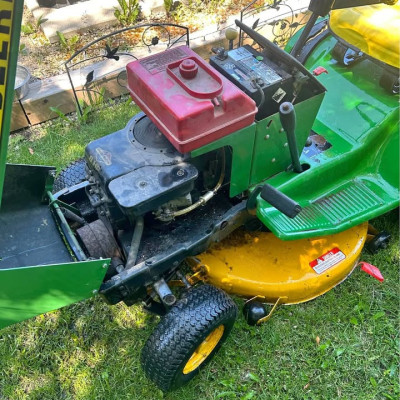How to Grow Your Booty: A Comprehensive Guide
In recent years, the quest for a fuller, toned booty has become a popular fitness goal. Whether driven by aesthetic desires or functional benefits, many people are interested in achieving a more pronounced gluteal profile. If you're looking to grow your booty, there are several key areas to focus on: understanding the anatomy of the glutes, incorporating effective exercises, maintaining proper nutrition, and practicing good recovery techniques. This guide will walk you through each of these components to help you build and grow your booty effectively.
Understanding the Anatomy of the Glutes
The gluteal muscles, commonly known as the glutes, are a group of three muscles located in the buttocks:
Gluteus Maximus: This is the largest and most superficial of the three muscles. It is primarily responsible for the shape and contour of the buttocks and plays a key role in hip extension, outward rotation, and abduction of the thigh.
Gluteus Medius: Located beneath the gluteus maximus, this muscle helps stabilize the pelvis during walking and running. It also assists in hip abduction and medial rotation of the thigh.
Gluteus Minimus: The smallest of the three, the gluteus minimus is located beneath the gluteus medius and assists with hip abduction and internal rotation.
Understanding these muscles helps in targeting them effectively with specific exercises to ensure balanced growth and strength.
Effective Exercises for Booty Growth
Squats: A foundational exercise for glute development, squats target the gluteus maximus effectively. Variations such as sumo squats (with a wider stance) and Bulgarian split squats (with one foot elevated) can further engage the glutes.
Deadlifts: This compound movement primarily works the gluteus maximus. Conventional deadlifts, Romanian deadlifts, and sumo deadlifts are all excellent choices. Ensure proper form to avoid injury and maximize effectiveness.
Lunges: Lunges work both the gluteus maximus and medius. Forward lunges, reverse lunges, and walking lunges can all be incorporated into your routine. Adding weights increases the challenge and results.
Hip Thrusts: This exercise isolates the gluteus maximus and allows for maximal contraction. Performing hip thrusts with a barbell or resistance bands can help in achieving a more sculpted look.
Glute Bridges: Similar to hip thrusts but performed on the floor, glute bridges are great for targeting the glutes and can be done with added resistance for increased intensity.
Step-Ups: Using a bench or step, step-ups work the glutes, particularly the gluteus medius. Adding weights can further enhance the exercise’s effectiveness.
Cable Kickbacks: Using a cable machine, this exercise isolates the gluteus maximus and helps in building definition. Adjust the weight and resistance to match your strength level.
Nutrition for Booty Growth
To build muscle, including in the glutes, proper nutrition is crucial. Here are some dietary tips:
Protein Intake: Protein is essential for muscle repair and growth. Include lean meats, fish, eggs, dairy products, legumes, and plant-based protein sources in your diet.
Healthy Fats: Incorporate healthy fats from sources like avocados, nuts, seeds, and olive oil. These fats support overall health and can aid in hormone production, which is important for muscle growth.
Carbohydrates: Carbohydrates provide energy for your workouts. Opt for complex carbs such as whole grains, fruits, and vegetables to fuel your exercise routine and aid in recovery.
Hydration: Staying well-hydrated is vital for optimal muscle function and recovery. Aim to drink plenty of water throughout the day.
Caloric Surplus: To gain muscle mass, you may need to consume more calories than you burn. However, this should be done with nutrient-dense foods to avoid excessive fat gain.
Recovery and Rest
Proper recovery is crucial for muscle growth and overall progress. Follow these guidelines to ensure effective recovery:
Rest Days: Allow your muscles time to recover by incorporating rest days into your workout routine. This prevents overtraining and reduces the risk of injury.
Sleep: Quality sleep is essential for muscle repair and overall well-being. Aim for 7-9 hours of sleep per night.
Stretching and Mobility: Incorporate stretching and mobility exercises to improve flexibility, prevent injury, and enhance muscle recovery.
Foam Rolling: Using a foam roller can help release muscle tension and improve circulation, aiding in recovery and reducing soreness.
Active Recovery: Light activities such as walking, yoga, or swimming on rest days can promote blood flow and assist in muscle recovery.
Additional Tips
Consistency: Building muscle takes time and consistency. Stick to your workout routine and nutrition plan to see gradual improvements.
Progressive Overload: Continuously challenge your muscles by increasing the weight or resistance in your exercises. This principle of progressive overload is key to muscle growth.
Form and Technique: Focus on proper form and technique to maximize effectiveness and reduce the risk of injury. Consider working with a personal trainer if you're unsure about your form.
Variety: Incorporate a variety of exercises to target different parts of the glutes and prevent plateaus.
Tracking Progress: Keep track of your workouts, nutrition, and progress to stay motivated and make necessary adjustments.
Conclusion
Growing your booty requires a combination of targeted exercises, proper nutrition, and effective recovery strategies. By understanding the anatomy of the glutes, performing the right exercises, fueling your body with the necessary nutrients, and allowing for adequate rest, you can achieve your fitness goals and enjoy a stronger, more sculpted backside. Remember, consistency and patience are key—stay dedicated to your routine, and results will follow.






